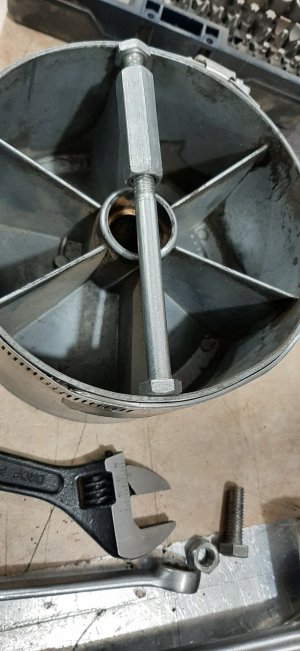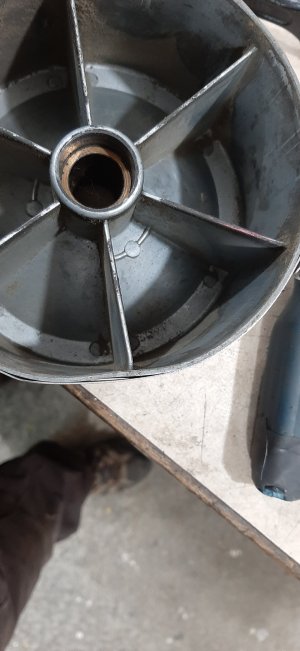Here is what I came up with. The wheels are now better, but far from perfect. I took an -thread rod coupler and a couple of bolts and used them as internal jacks. I took a large gear clamp and wrapped the exterior of the wheel with that, with a piece of 18 gauge steel inserted between the clamp and the wheel, opposite the dent I wanted to push out. I was hoping this would cause the greater force to be concentrated on the opposite side from the steel plate. It actually worked fairly well but I also noticed that I could easily cause a separation between the internal web supporting the wheel so a compromise had to be made. I did this on all of the major dents and I could note an improvement. But there are also some high spots, probably as a result of the low spots...? When I decided I had pushed my luck enough, I put some gorilla tape on some of the low spots and then put one wrap around the two wheels. I don't know why they are made as two parts so perhaps taping them together will not work. But by doing this, I was able to find the positions relative to each other where the differences are not as dramatic. We will see if it stands up.
I did warn my friend that to pursue it may cause the wheels to break and he was ok with that. I figured I can still be more aggressive in the future if this "bandaid" does not make the sander usable.



